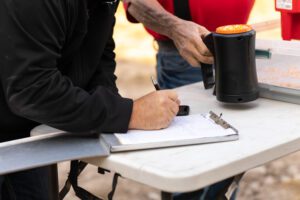OVERVIEW
 Corn growers often mistakenly correlate test weight (TW) to yield. The two measures are actually only marginally related. Relying too much on test weight can cause growers to over- or under-estimate their yield.
Corn growers often mistakenly correlate test weight (TW) to yield. The two measures are actually only marginally related. Relying too much on test weight can cause growers to over- or under-estimate their yield.
WHAT YOU SHOULD KNOW
- TW determines how many pounds of corn will fit into the volume of a bushel. It’s based on kernel density, kernel shape and size, slickness of the seed coat and more. TW heavily influenced selling decisions back when yields were measured by volume, not weight. Today, the USDA dictates standards for bushel weight (56 pounds for No. 2 yellow corn) and moisture per kernel rate (15.5 percent). If moisture is higher, buyers will charge for drying costs.
- Local grain buyers often reward growers whose grain has a higher TW, but this is really about efficiency, not yield. A ton of feathers and a ton of bricks weigh the same—the bricks are just a more efficient use of volume.
- TW may be reduced because of stresses during the grain-filling period, including drought, excessive soil moisture, nutrient deficiencies, lack of sunlight, temperature extremes, insect damage, frost and hail. TW also varies between hybrids. TW can be considered when selecting seed, but not at the expense of characteristics like yield and disease resistance.
ACTION STEPS
Calculate your yield estimate:
- Determine kernels per ear by multiplying the number of rows by the number of kernels in one row. Average at least five ears’ totals to increase accuracy.
- Determine the number of ears per acre by subtracting 1,000 to 2,000 ears from the targeted plant population.
- Using ears per acre and seed size, find the appropriate multiplier in Table 1.
- Example: An ear with 700 kernels (14 rows, 50 kernels per row) in a 28,000-population field (multiplier rate: .311) would equal a yield of 217.7 bu/A.
SUMMARY
- Test weight (TW) and yield are not as connected as most growers think.
- Focus on estimating yield, rather than TW.
- It’s sensible to consider TW when choosing seed, but look for more important characteristics first, like disease resistance and yield potential.
REFERENCES
1 Lee, C. and Herbeck, J. “Estimating Corn Yields.” 2005. University of Kentucky College of Agriculture Cooperative Extension Service. http://www2.ca.uky.edu/agcomm/pubs/agr/agr187/agr187.pdf
